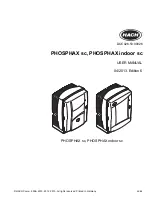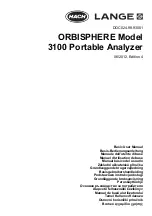
°
Troubleshooting
Problem
Cause/Action
Even though
you’re using
headphones
and the sound
is muted, a
thumping sound
is heard when
you play the
keyboard
This unit uses a hammer action keyboard in order to simulate an
acoustic piano’s playing touch as realistically as possible. For this
reason, you’ll hear the hammers thump when you play the keyboard,
just as you would when playing an acoustic piano. Since this unit
allows you to adjust its volume, you might notice the sound of the
hammers in certain situations, but this does not indicate a malfunc-
tion. If vibration transmitted to the floor or walls is a concern, you may
be able to minimize the vibration by moving the piano away from the
wall, or by laying down a commercially available anti-vibration mat
designed for use with pianos.
Power turns off
on its own
When 30 minutes have elapsed since you last played or operated this
unit, the power will turn off automatically. (This is the factory setting.)
If you don’t need the power to turn off automatically, turn the “Auto
Off” setting off (p. 14).
Power does not
turn on
Is the AC adaptor connected correctly? (p. 9)
Pedal does
not work, or is
“stuck”
Is the pedal connected correctly?
Plug the cord firmly into the pedal connector (p. 9).
If you disconnect the pedal cord from the unit while the power is on,
the pedal effect may remain “stuck” in the On condition.
You must power-off the unit before connecting or disconnecting the
pedal cord.
Could Twin Piano be turned on?
If Twin Piano is on, the right pedal will affect only the right-hand
keyboard zone and the left pedal will affect only the left-hand
keyboard zone (p. 3).
Insufficient
volume
Could the volume limit setting have lowered the maximum volume?
The volume can’t be louder than the specified volume limit. Change
the volume limit setting (p. 14).
The volume
level of the
instrument
connected to
Input jack is too
low
Could you be using a connection cable that contains a resistor?
Use a connection cable that does not contain a resistor.
No sound/No
sound when
you play back a
song
Could the unit’s volume or the volume of the connected equipment be
turned down?
Could headphones be connected?
Could there be a plug inserted in a headphone jack?
The speakers will not produce sound if headphones or plug are
connected to the headphone jacks (p. 9).
Has Local Control been set to “Off”?
When Local Control is set to Off, no sound is produced on the
keyboard. Set Local Control to On (p. 13).
Not all the notes
you play are
sounded
The maximum simultaneous polyphony is 128 voices. If you’re using
the Dual tone (p. 2), if you’re playing along with a song, or if you’re
making extensive use of the damper pedal, the performance data may
exceed the available polyphony, possibly causing some of the notes
you play to drop out.
Pitch of the
keyboard or
song is incorrect
Could you have made Transpose settings? (p. 12)
Is the Master Tune setting appropriate? (p. 11)
The notes of a piano are tuned using a unique method
(stretched tuning), which makes upper-range notes slightly higher in
pitch, and lower-range notes slightly lower in pitch. For this reason,
you might perceive the pitch as being incorrect, but this is the way an
acoustic piano should sound.
Sounds are
heard twice
(doubled) when
the keyboard is
played
Could you have selected a dual tone? (p. 2)
When this unit is connected to an external sequencer, set the Local
Control to off. Alternatively, the sequencer could be set so its Soft Thru
feature is Off (p. 13).
Reverberation
remains even
though you’ve
turned off the
Ambience effect
The piano sounds of this digital piano faithfully simulate the sense of
depth and resonance of an acoustic piano. For this reason, it may seem
as though there is some reverberation even when the Ambience effect
is turned off.
The sound
of the higher
notes suddenly
changes from a
certain key
On an acoustic piano, the approximately one and a half octaves
of notes at the upper end of the keyboard will continue sounding
regardless of the damper pedal. These notes also have a somewhat
different tonal character.
This unit faithfully simulate this characteristic of acoustic pianos. On
this unit, the range that is unaffected by the damper pedal will change
according to the transpose setting.
Problem
Cause/Action
High-pitched
ringing is heard
If.you.hear.this.in.headphones:
Piano sounds that have a brilliant and crisp character contain substan-
tial high-frequency components that may sound as though a metallic
ringing has been added. This is because the characteristics of an actual
piano are being faithfully reproduced, and is not a malfunction. This
ringing is more obtrusive if the ambience effect is applied heavily, so
you may be able to minimize it by decreasing the ambience.
If.you.don’t.hear.this.in.headphones:
It is likely that there is some other reason (such as resonances within
the unit). Please contact your dealer, the nearest Roland Service Center,
or an authorized Roland distributor, as listed on the “Information.”
Sound wrong, or
are buzzy
If you set the volume to the maximum setting, the sound may be
distorted depending on how you perform. If this occurs, turn down
the volume.
If.you.don’t.hear.this.in.headphones:
Performing at high volumes may cause the speakers or objects
near the unit to resonate. Fluorescent lights or glass doors may also
resonate sympathetically. In particular, this is more likely to occur for
lower notes and higher volumes. You can take the following measures
to minimize resonances.
• Locate this unit 10–15 cm (4–6 inch) away from walls or other
surfaces.
• Keep the volume down.
• Move away from the objects that are resonating.
If.you.hear.this.in.headphones:
It is likely that there is some other reason. Please contact your dealer,
the nearest Roland Service Center, or an authorized Roland distributor,
as listed on the “Information.”
When Using the Wireless LAN
Function
Problem
Cause/Action
Can’t connect to
a wireless LAN
access point
Make sure that your wireless LAN access point supports WPS. If your
wireless LAN access point does not support WPS, you can connect
using the procedure described in “Connecting in Ad-Hoc Mode” (p. 15).
The 802.11a/b wireless standard is not supported. Please use the
802.11g/n (2.4 GHz) wireless standard.
The WEP authentication method is not supported. Please use the WPA
or WPA2 authentication method.
Make sure that DHCP is enabled for your wireless LAN access point.
The connection might not occur successfully due to the state of the
radio signal. If so, use the procedure described in “Basic Connection
Method (Connect by WPS)” (p. 15), and reconnect your wireless LAN
access point.
There is a limit to the connection data that can be remembered.
Making a new connection may cause older connection data to be
deleted.
All connection data will be deleted if you execute a factory reset. If the
connection data has been deleted, please re-connect to the wireless
LAN access point.
Communication
is unstable
Communication may be unstable depending on the usage of the radio
frequency spectrum.
If communication is unstable, the response may be sluggish, or if using
audio communication, there may be dropouts in the audio.
The following actions may improve the situation.
• Move the wireless LAN access point and this unit closer to each
other.
• Change the channel setting of the wireless LAN access point.
The unit is not
found in the
instrument
connections
of the iOS app
(such as “Piano
Partner”)
Is the unit turned on?
Is the wireless USB adapter (WNA1100-RL) inserted to the unit?
Is the unit connected to the wireless LAN?
Are the unit and the iPad connected to the same network (the same
wireless LAN access point)?
Is the wireless LAN access point set to allow communication between
wireless LAN devices?
For details on settings, refer to the owner’s manual of your wireless
LAN access point.
16
Содержание F-130R
Страница 23: ......
Страница 24: ...For EU Countries For China...
Страница 26: ...5 1 0 0 0 3 7 5 9 2 0 2...











































